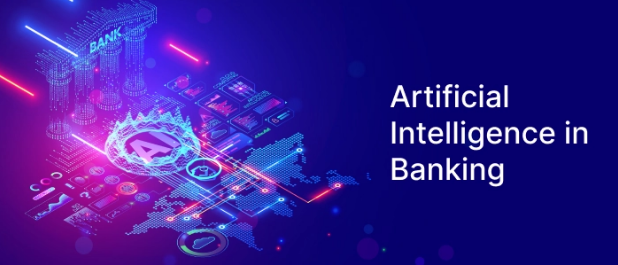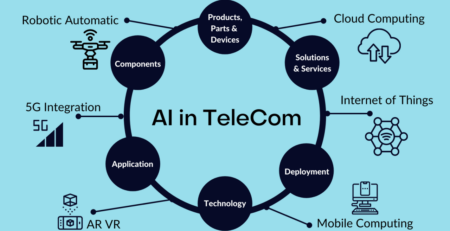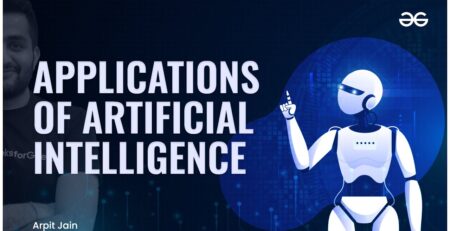AI Applications in Banking
AI is transforming the banking sector, offering significant improvements in efficiency, customer experience, and security. Here are some key applications of AI in banking:
- Fraud Detection and Prevention
- AI algorithms can analyze transaction patterns in real time to detect unusual or suspicious activities. These algorithms can flag potential fraud before it happens, helping banks reduce losses and protect customers.
- Machine learning models continuously learn from new data, improving their ability to identify fraudulent behavior over time.
- Customer Service and Chatbots
- AI-powered chatbots provide 24/7 customer service, handling inquiries, account information, transaction requests, and more.
- Natural language processing (NLP) enables chatbots to understand and respond to customers in human-like conversations, enhancing customer satisfaction.
- Credit Scoring and Risk Assessment
- AI can analyze a wider range of data (beyond just credit history) to assess an individual’s creditworthiness. This includes social media activity, transaction data, and other alternative data sources.
- Machine learning models can also predict the likelihood of loan defaults, helping banks manage risk more effectively.
- Personalized Banking
- AI enables personalized financial advice by analyzing customer behavior, transaction patterns, and financial goals.
- Banks use AI to recommend tailored products, services, and investment opportunities based on customer preferences and needs.
- Automated Wealth Management (Robo-Advisors)
- AI-driven robo-advisors can create and manage investment portfolios for clients, providing low-cost, automated wealth management services.
- These platforms use algorithms to optimize investment strategies based on risk tolerance, goals, and market conditions.
- Process Automation (Robotic Process Automation – RPA)
- AI-powered RPA tools automate repetitive tasks like data entry, compliance checks, and transaction processing, reducing operational costs and minimizing human error.
- This helps banks streamline back-office operations and improve overall efficiency.
- Anti-Money Laundering (AML)
- AI tools can scan large volumes of transactions to identify patterns of money laundering activities. These tools can flag suspicious transactions for further investigation, improving regulatory compliance.
- Natural language processing helps in analyzing unstructured data, such as news articles or reports, to detect potential money laundering risks.
- Predictive Analytics for Customer Insights
- AI-driven analytics tools analyze vast amounts of customer data to predict future needs or behavior, such as when a customer might need a loan or when they are likely to switch to a competitor.
- This allows banks to offer timely, relevant products and retain customers through proactive engagement.
- Voice Banking
- AI-powered voice assistants allow customers to perform banking transactions through voice commands, such as checking balances, transferring funds, or paying bills.
- Speech recognition technology ensures that these services are secure, using voice biometrics for identity verification.
- Regulatory Compliance (RegTech)
- AI technologies are used to help banks stay compliant with changing regulations. AI can scan and interpret regulations, identify areas of risk, and ensure banks meet all legal requirements.
- AI-driven tools also enable banks to monitor and manage their operations to ensure adherence to regulatory standards in real time.
- Loan Underwriting
- AI systems assist in the loan underwriting process by analyzing a customer’s financial situation and predicting their ability to repay loans, thus speeding up approval times and improving accuracy.
- Machine learning models assess a broader range of factors and ensure more objective and data-driven decision-making.
- Sentiment Analysis
- AI can analyze customer sentiment through social media, reviews, and customer interactions to gauge satisfaction, identify pain points, and improve the customer experience.
- Banks can use this data to adjust strategies, products, and services to better align with customer needs.
- Document Verification and Processing
- AI-powered optical character recognition (OCR) can quickly scan and extract information from documents such as ID cards, financial statements, and contracts, reducing manual efforts and increasing accuracy.
- AI algorithms can verify documents for authenticity, helping to prevent fraud.
- Smart ATMs
- AI-driven ATMs can offer more personalized services, such as recognizing customers via biometrics and providing tailored recommendations.
- They can also diagnose and troubleshoot issues remotely, reducing downtime and improving user experience.
In summary, AI in banking is improving operational efficiency, enhancing customer experiences, reducing risk, and enabling personalized services. As AI continues to evolve, we can expect even more transformative changes in the financial services industry.






